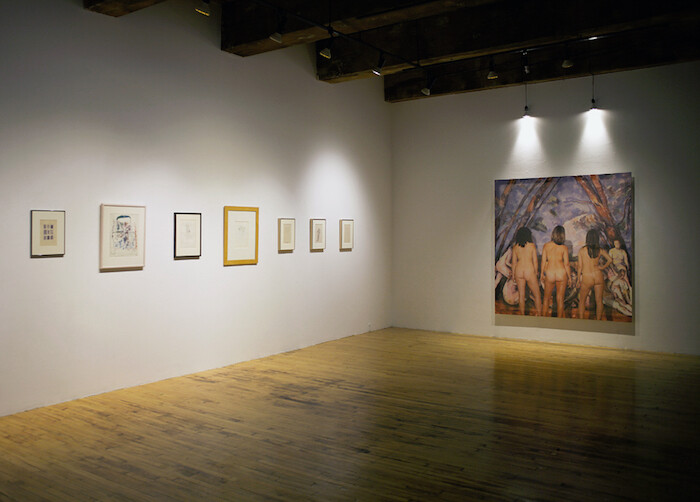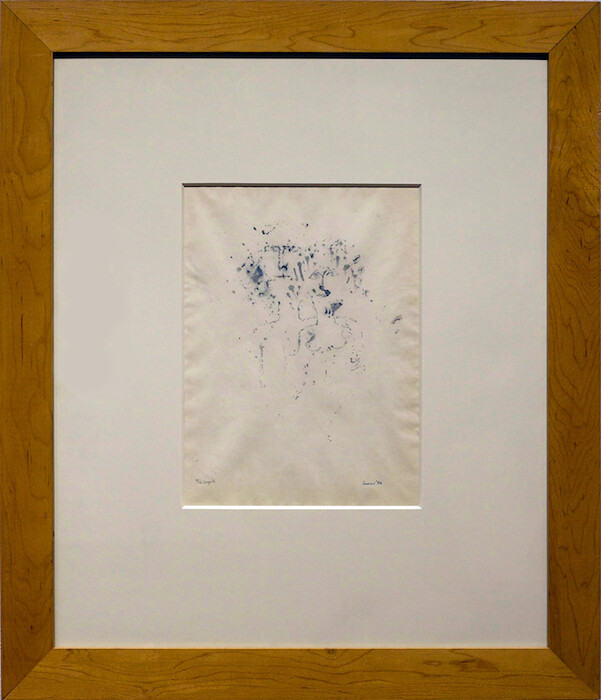Throughout an expansive practice that spans more than half a century, Michael Snow has questioned the conditions of perception and pushed against the material properties of multiple mediums. Snow’s work has remained relevant to successive generations of artists because of the generosity it can extend to viewers. In encountering his best work, bodies become a primary site of meaning, a tether between the intellectual and the visceral, the psychological and the physical.
However, there are two sides to every story, and as much as Snow’s work invites it can also exclude, with many of his most iconic pieces fetishizing the bodies of women, creating a space for the viewer determined by a male gaze that is at worst lecherous and at best limiting, reinforcing the boundaries of a gender binary—a power of two. Two Sides to Every Story is also the title of one of Snow’s most visionary works, a 16mm film installation from 1974 that explores the tension between the recto and verso of an image, and while it does not appear in this exhibition, its formal conceit is directly connected to Powers of Two (2003), a large-scale photo installation from which the title of this exhibition is derived.
In the former, two 16mm projectors are directed at either side of a hanging opaque screen, simultaneously presenting the same scene captured from opposite angles. The viewer has to walk back and forth between the two sides of the screen in order to perceive, from both angles, a series of actions performed by a woman under Snow’s direction, who also joins her on camera. Together the films show the woman interacting with a transparent screen (of the same scale as the one that the film is projected on), painting it on one side or even stepping directly through it after it has been sliced through its center. In the latter, a row of four transparent color photographs suspended from the ceiling form a single image: a domestic tableau of a heterosexual couple lying horizontal on a bed in the missionary position. The woman returns the gaze from both sides of the image, while the man’s head is turned away, rendering him anonymous. The materiality of Powers of Two is complex but its conceit is anything but: the gaze is an invitation to the woman’s body, and the unidentified man a physical placeholder for the projection of the presumed male spectator.
The second half of the exhibition opens up Snow’s practice in the same way that Powers of Two encloses the viewer in the intimacy of domestic portraiture. Sculpture, drawings, and photography form a line across the three main walls in the north gallery, arranged out of chronological order, one medium per wall. Site (1969/2016), which is a refabrication of a sculpture that was previously lost, makes a weak gesture towards Snow’s Wavelength (1967) through a diminutive typewritten text that refers to an absent image of waves, bringing to mind the final frames of his iconic film. Paris de jugement Le (2003) is a slight and self-conscious invitation to self-reflexive discourse interlinking painting and photography, with three nude women photographed as they stand facing Paul Cézanne’s Large Bathers (1898-1906). It is a selection of early drawings primarily surveying a ten-year period from 1953 to 1963 that offers the most insight into Snow’s psychology of perception.
The Couple (1958) depicts what its title suggests, here sketched from the waist up. A man’s arm cradles a woman, their bodies discernible in the spare lines of ink. Snow’s loosely pointillist approach results in their features being partially effaced at the same time as their bodies come together. In Show (1954), the faint outline of stage curtains frames a nude drawn from behind facing out towards an audience of thirteen faces that leer and peer back, the imbalance of voyeurism on full display. Finally, in Room and Occupants Slightly Condensed (1956), two human figures and what appears to be a family pet are elongated and pulled across a diagonal, pushed into the upper left corner of the “room”: a cursory outline that follows the perimeter of the paper in the same red ink used to sketch the people. It anticipates the concrete encounter of bodies in space that would go on to preoccupy Snow in both analog and digital, still and moving images; its title could serve as an alternative to Powers of Two itself.
Exiting the gallery means again encountering Powers of Two. Like in Two Sides to Every Story, the image is suspended in mid-air, and this display can’t help but act as a metaphor for the unresolved nature of both. Each of them reorient space, with Snow pulling the picture plane away from the wall and extending an invitation to directly approach the bodies he’s photographed. However, his invitation is also an orientation into the repressive binaries of object/subject and man/woman. Two Sides to Every Story at least provides an opening, literally, through the breach of the screen once it has been slashed. While Powers of Two does feature three seams that are similar in scale to the slits made on the screen in this earlier work, these breaks in the image are merely a means to fortify its form, not question its foundation.










